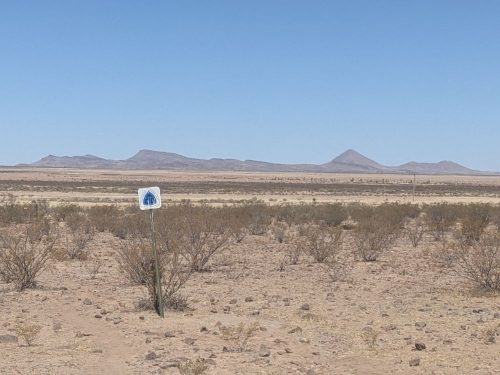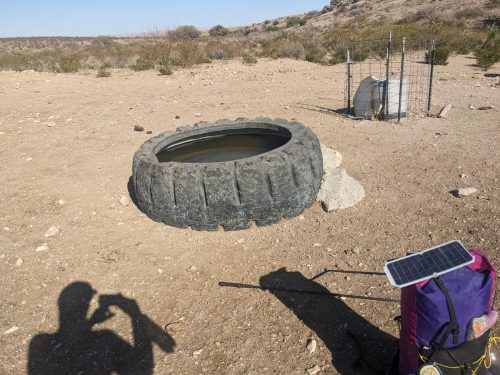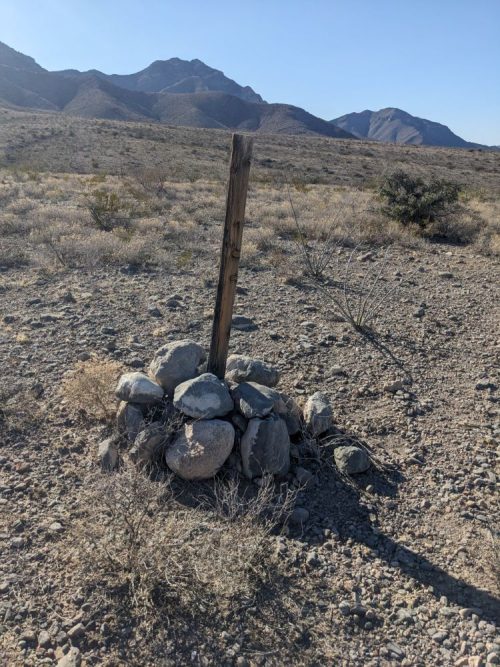- CDT NM 2025 Day 3, Wednesday April 9
- Start dirt track mile 48.4
- End past water cache 5 mile 77.1
- Miles walked: 28.7
I continue past low hills.

Near water cache box 4 I meet Jersey, from Tennessee.

The route traverses a valley floor with the first appearance of grasses, tan contrasting with the dark green creosote bush. The CDT signs are spaced far apart, and I get off trail dozens of times today. Wind is often too loud to listen to audio.

Later the route enters some low black hills with scattered volcanic rock.

My water filter gets its first use at a tire waterer.

Finally I get to my last water cache box, number 5, and look for a campsite out of view of an enormous ranch house. Tomorrow is Lordsburg, and I will enjoy snacks, but not stay overnight, for the trip is still just beginning.
Finished audiobook Bardelys the Magnificent, by Rafael Sabatini, read by Mark Nelson.












